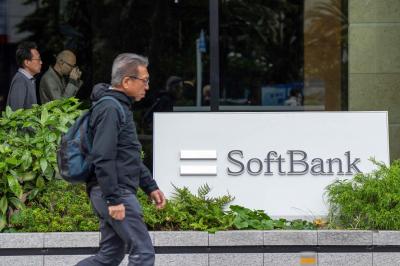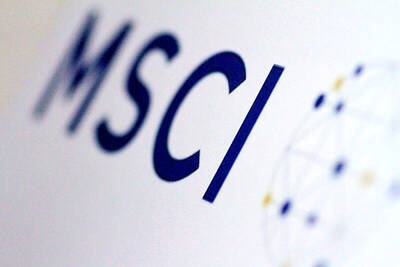India’s economic growth accelerated, adding pressure on the central bank to raise interest rates even as Europe’s sovereign-debt crunch threatens the global recovery.
GDP rose 8.6 percent in the three months ended March 31 from a year earlier after a revised 6.5 percent gain in the previous quarter, the statistics office said in a statement in New Delhi yesterday. That matched the median estimate in a Bloomberg News survey of 22 economists.
India and China, the world’s fastest-growing major economies, are weighing the risk of Europe’s debt crisis reducing demand in the market that accounts for a fifth of their exports. For India, the room to pause on monetary tightening is limited because its benchmark inflation rate is more than three times that in China.
“Demand-side pressures are building up, which is a worrying sign for inflation,” said Vishnu Varathan, a regional economist at Forecast Singapore Pte. “It will be difficult for the Reserve Bank of India to retract itself from normalizing interest rates.”
India’s central bank said on May 19 that it will raise rates only cautiously even though they are “out of line” with the key wholesale-price inflation rate, running at 9.59 percent. In comparison, China’s US$4.3 trillion economy expanded 11.9 percent in the first quarter and consumer prices rose 2.8 percent in April from a year earlier.
India’s Sensitive Index gained 0.2 percent to 16,900.53 at 12:05pm on the Bombay Stock Exchange. The yield on the 10-year government bond advanced 2 basis points to 7.52 percent from before the report.
The rupee was little changed, maintaining its 4.5 percent drop against the US dollar this month, boosting import costs and impeding central bank Governor Duvvuri Subbarao’s efforts to cool inflation.
Manufacturing rose 16.3 percent in the three months through March from a year earlier, compared with a 13.8 percent gain in the previous quarter, yesterday’s report showed. Farm output rose 0.7 percent from a contraction of 1.8 percent and mining grew 14 percent.
European Central Bank President Jean-Claude Trichet said yesterday that emerging nations have weathered the global recession better and are a “source of strength” for the world economy. GDP in the euro region rose 0.5 percent in the first quarter from a year earlier, the EU’s statistics office said.
Growth in India’s US$1.2 trillion economy, Asia’s largest after Japan and China, is accelerating as rising incomes boost demand for cars, cellphones and air travel. Salaries in India may increase at the fastest pace in the Asia Pacific this year, said Hewitt Associates Inc, the Lincolnshire, Illinois-based human resources adviser.
Car sales by companies including Maruti Suzuki India Ltd and Tata Motors Ltd rose 39.5 percent in April from a year earlier, the biggest jump for the month since 1999, the Society of Indian Automobile Manufacturers said.
Services including air travel, which account for about 55 percent of India’s economy, expanded the most in 21 months in April, according to the Purchasing Managers’ Index released by HSBC Holdings Plc and Markit Economics.
Some economists say the government has made slow progress in creating new capacity in infrastructure such as power, roads and ports, which is adding to inflation pressures and limiting economic expansion.
“The shortage of infrastructure has an adverse impact on growth and it increases the cost of operations for companies,” said Shashanka Bhide, chief economist at the New Delhi-based National Council of Applied Economic Research.

PERSISTENT RUMORS: Nvidia’s CEO said the firm is not in talks to sell AI chips to China, but he would welcome a change in US policy barring the activity Nvidia Corp CEO Jensen Huang (黃仁勳) said his company is not in discussions to sell its Blackwell artificial intelligence (AI) chips to Chinese firms, waving off speculation it is trying to engineer a return to the world’s largest semiconductor market. Huang, who arrived in Taiwan yesterday ahead of meetings with longtime partner Taiwan Semiconductor Manufacturing Co (TSMC, 台積電), took the opportunity to clarify recent comments about the US-China AI race. The Nvidia head caused a stir in an interview this week with the Financial Times, in which he was quoted as saying “China will win” the AI race. Huang yesterday said

Japanese technology giant Softbank Group Corp said Tuesday it has sold its stake in Nvidia Corp, raising US$5.8 billion to pour into other investments. It also reported its profit nearly tripled in the first half of this fiscal year from a year earlier. Tokyo-based Softbank said it sold the stake in Silicon Vally-based Nvidia last month, a move that reflects its shift in focus to OpenAI, owner of the artificial intelligence (AI) chatbot ChatGPT. Softbank reported its profit in the April-to-September period soared to about 2.5 trillion yen (about US$13 billion). Its sales for the six month period rose 7.7 percent year-on-year

Nissan Motor Co has agreed to sell its global headquarters in Yokohama for ¥97 billion (US$630 million) to a group sponsored by Taiwanese autoparts maker Minth Group (敏實集團), as the struggling automaker seeks to shore up its financial position. The acquisition is led by a special purchase company managed by KJR Management Ltd, a Japanese real-estate unit of private equity giant KKR & Co, people familiar with the matter said. KJR said it would act as asset manager together with Mizuho Real Estate Management Co. Nissan is undergoing a broad cost-cutting campaign by eliminating jobs and shuttering plants as it grapples

MORE WEIGHT: The national weighting was raised in one index while holding steady in two others, while several companies rose or fell in prominence MSCI Inc, a global index provider, has raised Taiwan’s weighting in one of its major indices and left the country’s weighting unchanged in two other indices after a regular index review. In a statement released on Thursday, MSCI said it has upgraded Taiwan’s weighting in the MSCI All-Country World Index by 0.02 percentage points to 2.25 percent, while maintaining the weighting in the MSCI Emerging Markets Index, the most closely watched by foreign institutional investors, at 20.46 percent. Additionally, the index provider has left Taiwan’s weighting in the MSCI All-Country Asia ex-Japan Index unchanged at 23.15 percent. The latest index adjustments are to